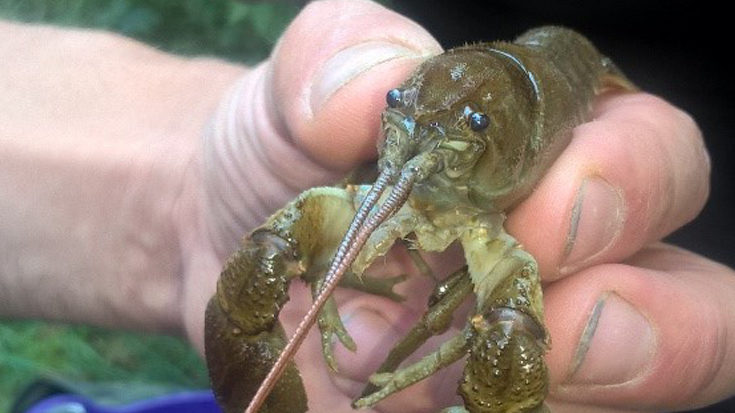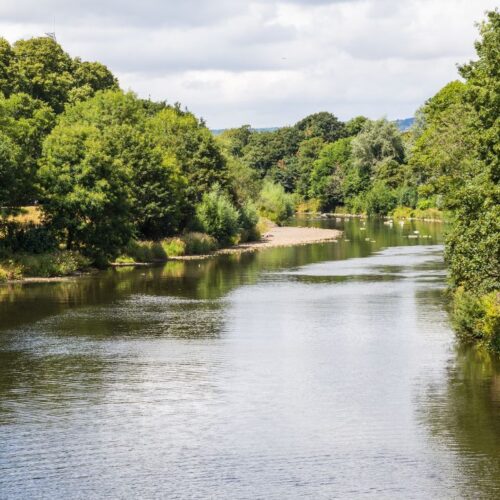Do you have a project with a river, lake, stream or pond close to it? If so, you might find yourself in deep water if you haven’t had any ecological surveys carried out to identify White-clawed crayfish. Senior Ecological Consultant, Felicity Andruszko, is leaving no stone un-turned, bringing you seven snappy crayfish facts, as well as information on how you can keep your development projects on track.
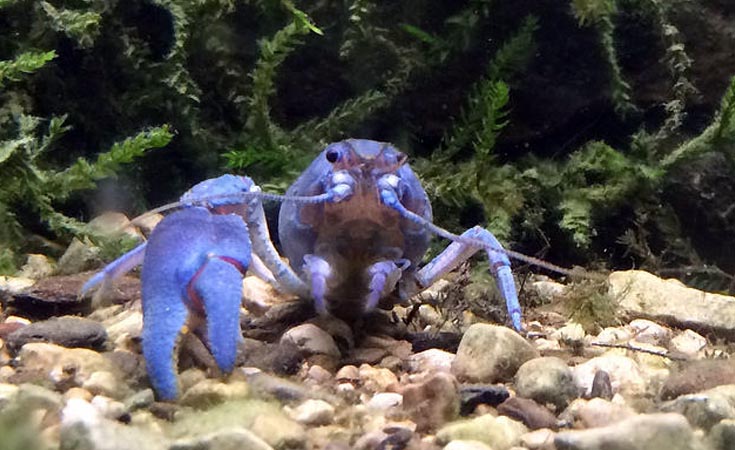
12 Interesting crayfish facts
1) There are seven known crayfish species in the UK
There are seven species of crayfish currently known to be present in the wild in the UK. However only one of these species is native – the White-clawed crayfish (pustropotamobius pallipes).
2) Native crayfish like calcium-rich waters
White-clawed crayfish require water-bodies to be alkaline, calcium-rich, clean and well oxygenated. They can be found in streams and rivers as well as deeper lakes and ponds, and favour habitats with refuges such as large stones, and submerged tree roots where they can hide from predators.
3) You’re unlikely to see them in Scotland…
White-clawed crayfish are found in scattered locations across England and Wales and in a few areas in Northern Ireland but are almost entirely absent from Scotland. That is, aside from Loch Croispol in Sutherland and Whitemoss Reservoir in Renfrewshire, where they have resided for several decades.
4) Crayfish are approximately 150 million years old
Fossils have been found by scientists in the Northern Hemisphere that prove their vast age of 150 million. Fossils have also been found in the Southern Hemisphere that show crayfish to be 106 million years old.
5) Crayfish molt
Did you know, crayfish will usually eat their old skeleton in order to recover the calcium and phosphates contained in it? Crayfish will shed their exoskeletons so that they can grow a new one when they increase in size. In the first year of their life, they molt six to ten times!
6) They have great eyesight
You might not imagine so, but crayfish actually have brilliant eyesight. Their eyes can move independently from one another and are referred to as compound eyes. This means their eyes are made up of repeating units called the ommatidia, which each function as their own individual visual receptor.
7) Crayfish don’t walk backwards
They walk forwards; the only time crayfish move backwards is when they swim. They achieve this backwards motion while swimming by utilising their abdomen movements.
8) Crayfish sperm have no tails
Crayfish sperm is known to be very unique. This is because their sperm have no tails (flagella). Instead, they look like something similar to amoeba and actually crawl towards the eggs.
9) The largest crayfish in the world grow up to 40cm
The largest known crayfish is the Astacopsis gouldi from Tasmania. These crayfish can reach up to a massive 40 cm in length and weigh about 3.5 kg.
10) White-clawed Crayfish are declining in number
Approximately 70% of the native White-clawed Crayfish UK population has been lost since the 1970s, due to pollution, habitat loss and the introduction of non-native crayfish. The non-native signal crayfish (pacifastacus leniusculus), which was introduced to the UK from North America in the 1970s, was sold to farmers looking to diversify into new markets. The signal crayfish escaped from these farms and established populations in our rivers and lakes.
Non-native crayfish, such as the signal crayfish, aggressively out-compete white-clawed crayfish for food and habitat and spread diseases such as crayfish plague, to which white-clawed crayfish have no resistance.
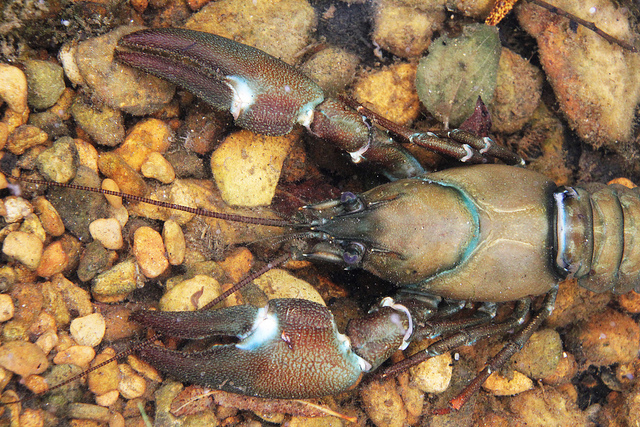
11) In the UK it is an offence to release Signal Crayfish into the wild
Signal crayfish are listed on Schedule 9 of the Wildlife and Countryside Act, which makes it an offence to release or otherwise allow them to spread.
If a project has non-native species present, like the signal crayfish, bio-security measures will need to be implemented to ensure they do not spread, which in turn can spread diseases.
12) White-clawed crayfish are a protected species
White-clawed crayfish are protected in the UK under Schedule 5 of the Wildlife and Countryside Act 1981 (as amended). Under this Act, it is an offence to intentionally take white-clawed crayfish from the wild; and sell or attempt to sell any part of a white-clawed crayfish – alive or dead; or advertise that one buys or sells, or intends to buy or sell, any part of a white-clawed crayfish.
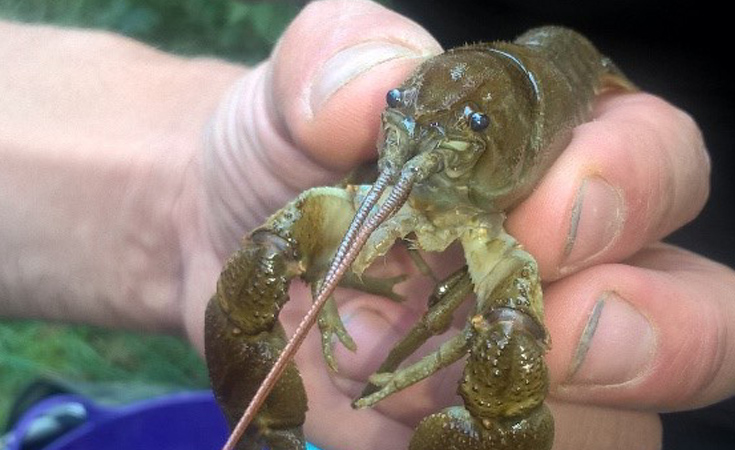
White-clawed crayfish, Essex © Thomson Environmental Consultants
How to stay environmentally compliant with your development project
White-clawed crayfish surveys and mitigation FAQs
As white-clawed crayfish are a protected species, it’s important to understand the legislation affecting them, and whether you require surveys and mitigation work to be carried out.
Do I need a white-clawed crayfish survey?
If your development project will affect a habitat or water body, for instance a canal, stream, river, lake, reservoir or water-filled quarry which could be suitable for crayfish, then it’s possible that white-clawed crayfish may be present and you will require a survey.
What does a white-clawed crayfish survey involve?
A survey licence from the relevant statutory body (e.g. Natural England) is required for surveying (handling and taking) of white-clawed crayfish. If a development may harm or involve the ‘taking’ of white-clawed crayfish, a licence will be required from the relevant statutory body for conserving the species.
The first part of the process involves a Habitat Suitability Assessment (HSA), whereby parameters are recorded for each water-body. This includes water-body type, water depth, flow rate, flow velocity and water pH.
Habitat features are also investigated, for instance, the substrate of the bed and banks and presence of emergent vegetation. Alongside this, a desk study will also be undertaken to identify any records of crayfish within the catchment of your development site.
White-clawed crayfish survey techniques include refuge search, netting, night viewing, trapping and artificial refugia.
When can crayfish surveys take place?
Most surveys for crayfish can be carried out all year round. However, due to the habits of white-clawed crayfish, there are different types of surveys that need to be carried out at specific times. These include habitat surveys only – due to reduced crayfish activity; hand searching, torchlight, trapping and substrate searching. Check out our Species Survey & Mitigation Planner.
When can mitigation take place?
The optimal time for licensed capture and exclusion for white-clawed crayfish is in April and July through October.
What mitigation can be done?
Mitigation measures for white-clawed crayfish can include:
- reducing disturbance to the riverbank
- reducing the amount of sediment released into the water
- reducing the area affected
- doing work in small sections
- reducing water pollution including silt
- adding appropriate vegetation
- excluding crayfish from construction areas (when the water temperature is 4°C or higher)
We can help you stay environmentally compliant
To learn more about these different types of surveys and mitigation techniques, get in touch with us today and ensure you’re meeting environmental compliance requirements when it comes to non-native species and protected freshwater species like the white-clawed crayfish.
